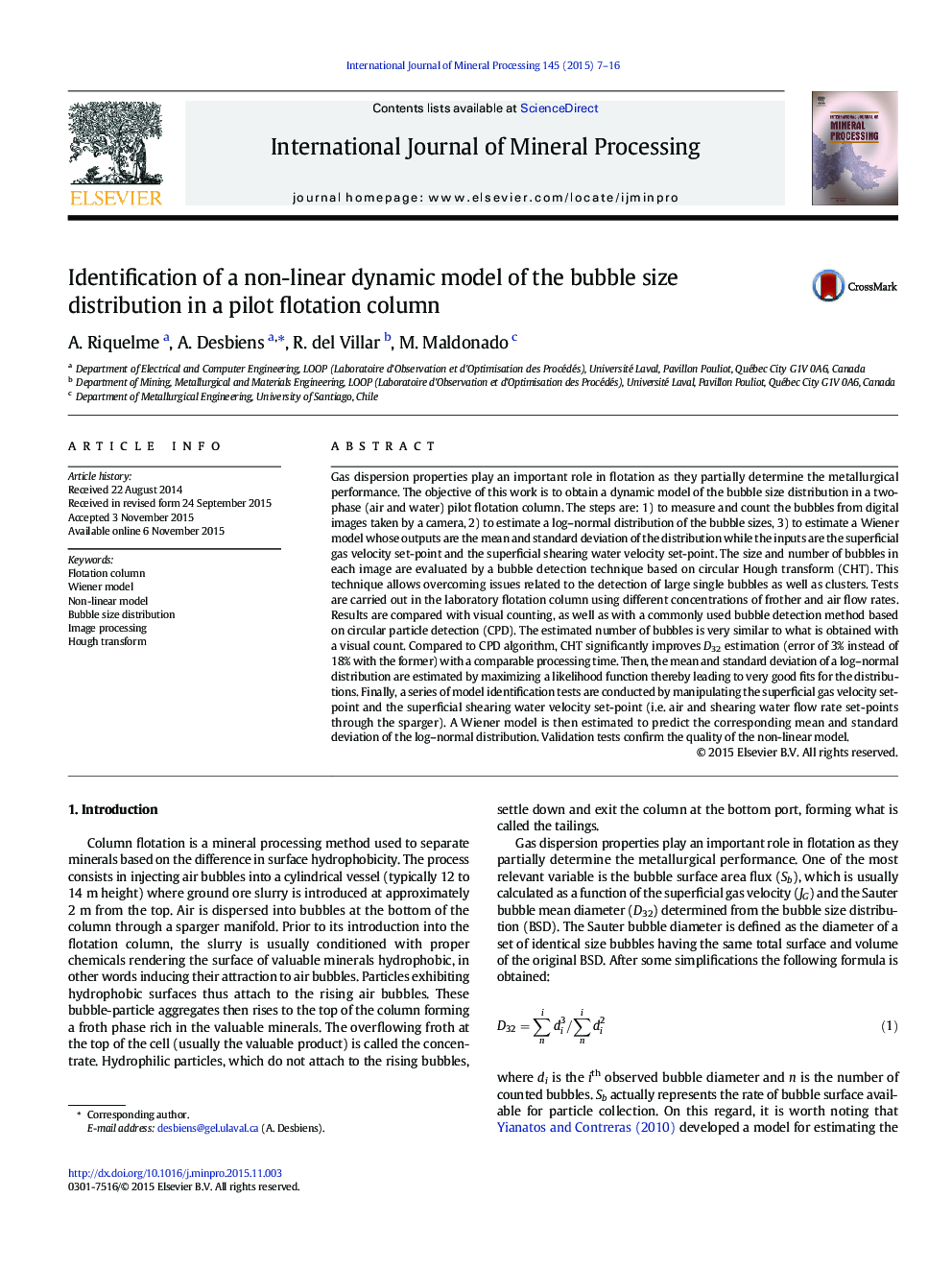| کد مقاله | کد نشریه | سال انتشار | مقاله انگلیسی | نسخه تمام متن |
|---|---|---|---|---|
| 213843 | 1425788 | 2015 | 10 صفحه PDF | دانلود رایگان |
• Measurement of the diameter of the bubbles in a pilot flotation
• Estimation of a log–normal distribution of the bubble sizes
• Estimation of a nonlinear dynamic model to predict the bubble size distribution
Gas dispersion properties play an important role in flotation as they partially determine the metallurgical performance. The objective of this work is to obtain a dynamic model of the bubble size distribution in a two-phase (air and water) pilot flotation column. The steps are: 1) to measure and count the bubbles from digital images taken by a camera, 2) to estimate a log–normal distribution of the bubble sizes, 3) to estimate a Wiener model whose outputs are the mean and standard deviation of the distribution while the inputs are the superficial gas velocity set-point and the superficial shearing water velocity set-point. The size and number of bubbles in each image are evaluated by a bubble detection technique based on circular Hough transform (CHT). This technique allows overcoming issues related to the detection of large single bubbles as well as clusters. Tests are carried out in the laboratory flotation column using different concentrations of frother and air flow rates. Results are compared with visual counting, as well as with a commonly used bubble detection method based on circular particle detection (CPD). The estimated number of bubbles is very similar to what is obtained with a visual count. Compared to CPD algorithm, CHT significantly improves D32 estimation (error of 3% instead of 18% with the former) with a comparable processing time. Then, the mean and standard deviation of a log–normal distribution are estimated by maximizing a likelihood function thereby leading to very good fits for the distributions. Finally, a series of model identification tests are conducted by manipulating the superficial gas velocity set-point and the superficial shearing water velocity set-point (i.e. air and shearing water flow rate set-points through the sparger). A Wiener model is then estimated to predict the corresponding mean and standard deviation of the log–normal distribution. Validation tests confirm the quality of the non-linear model.
Journal: International Journal of Mineral Processing - Volume 145, 10 December 2015, Pages 7–16
